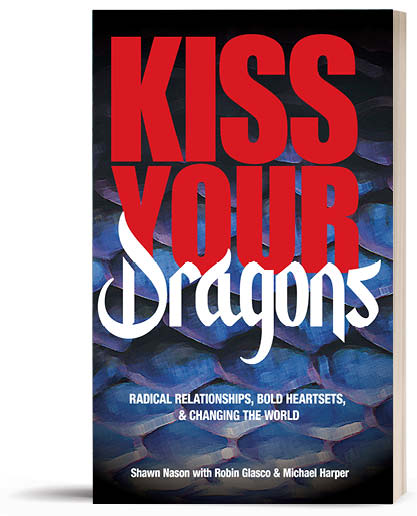
Summary: MYTH 1: Failure is not an option.
MYTH 2: Look before you leap.
MYTH 3: Respect your elders.
MYTH 4: Keep yourself to yourself.
MYTH 5: Dress for success
MYTH 1: Failure is not an option
Our world does not celebrate failure, but it sure does celebrate people who fail—people like Ratan Tata, Thomas Edison, and J K Rowling. Tata was humiliated by Ford Motor Company executives when he tried to sell them Tata Group’s struggling passenger-vehicle business; nine years later, he saved Ford by taking over Jaguar Land Rover. Thomas Edison came up with 3,000 theories about electric light before inventing a lightbulb that worked. Rowling was divorced, bankrupt, and on public assistance before she found a publisher for Harry Potter and the Philosopher’s Stone, which launched the bestselling book series of all time.
Speaking at Harvard University’s commencement ceremony a few years ago, Rowling said, “You might never fail on the scale I did. But it is impossible to live without failing at something, unless you live so cautiously that you might as well not have lived at all—in which case, you fail by default.”
I like that quote, but I really love one from Thomas Edison. When a friend lamented that Edison’s work on a project had yielded no results, Edison replied, “Results! Why, man, I have gotten lots of results! I know several thousand things that won’t work!”
Let that sink in for a moment. To find success, you have to experience failure.
That truth is not limited to inventing. When my company, MOFI, works with clients on improving their customer experience, we push them to ‘fail forward’. And we encourage them lean into a bias towards action, even if that means making some mistakes along the way.
If you want to succeed in business—or for that matter, in any aspect of life—you have to embrace and learn from failure. Yes, you will make mistakes, maybe even some big ones. Yes, you may fail, maybe even spectacularly. But you will be so much better off than if you had never tried in the first place.
MYTH 2: Look before you leap
I tend to jump into the deep end of the pool, only asking if there is any water once I am mid air. Sure, that has gotten me in trouble a time or two. But more often than not, I have found that leaping before you look is actually a good idea
Recently, our team created a podcast called The Combustion Chronicles—something we had zero experience doing. Instead of holding an initial discovery meeting one week, assembling a team to do a feasibility study, and then scheduling a report-out meeting with stakeholders to start thinking about making some decisions about a possible concept, we jumped in, figured it out, and made it happen. In fact, we moved from ‘we hadn’t really thought about starting a podcast’ to ‘we gave two seasons in the can’ in 21 days.
Sure, we might have done a few things differently had we spent more time on research. But we also might have succumbed to analysis paralysis and never recorded a single episode.

MYTH 3: Respect your elders
Even in our post-modern world, where equality is more important than ever, hierarchy still matters. We defer to our elders, to the people atop the organisational chart, to the executives in the corner office. But I think we actually disrespect those people when we do not tell them what they need to hear.
Let us face it: someone with ‘chief’ in their title is probably at least a few steps removed from customers and frontline employees. And that means they are probably a little out of touch with the on-ground reality. The best way to show them respect is actually to bring them the information they need to make good decisions.
A big part of the life-centered design process that MOFI specialises in involves interviewing consumers and employees and then turning what we have learned into persona and journey maps that bring problems to light for executives. That sometimes means sharing pretty uncomfortable truths, but we have found that the people who care—the people who are worthy of respect—would rather know what is going on in their business than be kept in the dark.
MYTH 4: Keep yourself to yourself
Thanks to COVID-19, millions of people started working from home last year. While that created tons of challenges, especially, for extroverts and anybody with a slow internet connection, it was not all bad. Far from it.
Suddenly, we were seeing our co-workers as they really are, not as people hiding behind masks—not the literal masks that keep the virus from spreading, but the figurative ones that disguise our true selves. On Zoom meetings, we could see the pictures on our colleagues’ walls and the books on their shelves. We could hear pets in the background or watch children wandering into view to ask for a snack. We felt more connected to our co-workers than we ever had before.
We have always been a 100 per cent virtual team, and I have employees I have never met in person. But I know them better than some of the people I worked side-by-side within a corporate environment. And they work harder and better because they are able to bring their whole selves to work.
MYTH 5: Dress for success
Once the pandemic restrictions finally end, many of us are going to go back to workplaces that have both written and unwritten dress codes. We are going to dust off our power suits, get our nicest dresses back from the dry cleaner, and head into the office ready to wow our bosses.
But guess what? The thing that really wows bosses—at least the ones worth wowing—is success. And you cannot dress for that; you have to work for it
When I meet a CEO, I usually walk in wearing jeans or shorts. It is what I wear. My hair can be whatever colour it happens to be at that time. It does not matter. The true difference is that when I open my mouth, I talk straight to them about their business. My approach is, “Let’s blow stuff up and let’s do what’s right for the employees and for the consumers. And if that’s not what you want, then we’re not the right people for you, and I’m OK with that.”
Log In or become an AIMA member to read more articles
